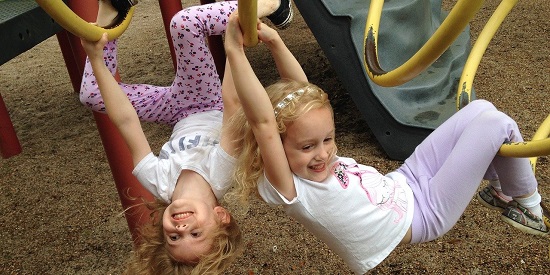Australians tell us what they want in parks and playgrounds
Media release
A major national study into suburban parks and playgrounds has identified a wish-list of features that meet the needs of various user groups.
The study by Associate Professor Jenny Veitch and her team from Deakin University's Institute for Physical Activity and Nutrition (IPAN) found children, adolescents and older adults all look for different features in parks but all age groups benefit from well-designed urban spaces that cater for play and relaxation.
Associate Professor Veitch, a National Heart Foundation of Australia Future Leader Fellow, said the findings were important because many parks were an under-utilised resource in the urban landscape, yet the social and physical benefits of park use were high.
"COVID-19 reminds us of the critical role parks play in our community. For many people during lock-down, visiting a nearby park has been one of the highlights of the day," Associate Professor Veitch said.
"They are a free space, easy to access and can have a significant impact on the health and wellbeing of all Australians."
The Australian Research Council-funded study, ProjectPARK, found that well-designed parks should include different features for different age groups.
"For example, children like opportunities for physical challenge and risk and adventure, such as flying foxes, adventure playgrounds, trees for climbing, swings and obstacle courses," Associate Professor Veitch said.
"Adolescents like places to hang out with friends, sports courts, grassy open spaces, large swings, and cafes.
"Older adults enjoy more peaceful and relaxed settings with walking paths, shady trees and birdlife."
Associate Professor Veitch and her team found that park planners and designers needed access to evidence on best practice park design and research demonstrating the cost benefit of park refurbishments to help inform future park design and refurbishment in Australia.
"In a previous park refurbishment study, a cost-benefit analysis showed it cost 58 cents to gain an additional hour of moderate exercise per person," said Associate Professor Veitch.
"Yet parks also have wider benefits. They are accessible to all and contribute to improved physical health, quality of life, mental health, social interaction, long-term health care cost savings, and benefit our natural environment.
"Many councils do spend a lot of money on parks, but it must be the right expense that achieves the well-designed, attractive environments that are wanted by the public.
"Otherwise, we are wasting valuable space and funds. Parks currently not well attended should be reinvigorated and refurbished to optimise use, offering huge benefits to our population's physical, social and mental wellbeing."
Associate Professor Veitch said research showed a key determinant of a successful park was the design of its amenities and features.
"The Tan Track around Melbourne's Botanic Gardens demonstrates how an optimal public space will attract many people," she said.
"Some of the Tan's features include a loop of a structured distance with varying gradients – wide enough for a number of users – easy accessibility, trees for shade, beautiful views of the Botanic Gardens, a well-sealed path and nearby food outlets."
Associate Professor Veitch said that creating active environments that facilitate physical activity was a global priority, given the international trend to denser urban living and rising obesity levels, and had been recognised through the United Nation's 2030 'Agenda for Sustainable Development' and the World Health Organisation's 'Global Action Plan on Physical Activity 2018–2030'.
ProjectPARK was funded by the Australian Research Council (DP170100188) and includes published research on the park preferences of children, adolescents and older adults.
Associate Professor Veitch is supported by an Australian National Heart Foundation Future Leader Fellowship (ID 101928)

